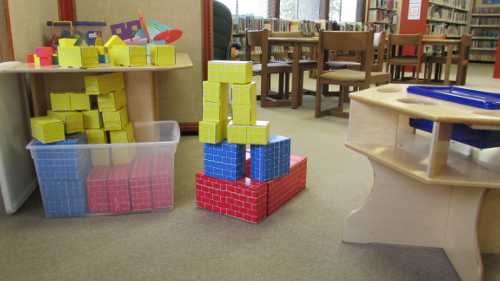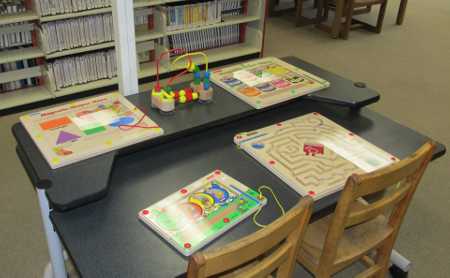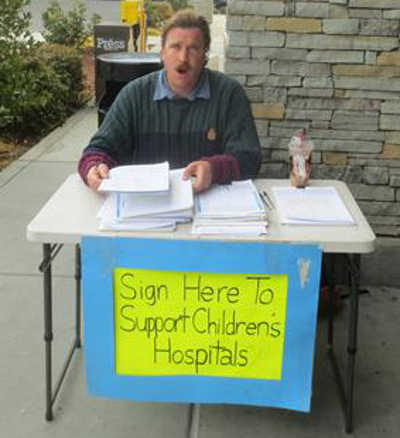- Laurie Daly
- Posted On
Daly: Why I am opposed to SB 837
I am opposed to and alarmed by the proposed legislation SB 837, which I believe is set for vote in the Senate on May 2.
I am more than concerned that the foundations of preschool and the entire child care profession are being challenged in this bill and that we are abandoning over 150 years of solid research and losing valuable expertise because of SB 837's wording.
My main concern is that this will be harmful to 4-year-olds.
SB 837 will take the current state funded preschool for 4-year-olds and require that these children be moved from pre-school and put into Transitional Kindergartens (TK). The elementary schools will get new funding, which has been traditionally funneled to preschools. Preschools are horrified because they realize they are losing state funding for all 4-year-olds and many child care facilities will have to close. Jobs will be lost.
Moreover, I have a fear that 4-year old boys will be put on anti ADD/ADHD drugs, such as Ritalin or Strattera, to calm down their natural 4-year-old energy, because the environment and curriculum will be inappropriate. Preschool and Kindergarten are radically different both in environment and curriculum.
The ratios in a preschool are much smaller. Some preschools are as low as 1 teacher to 5 children ratio, Title 5 requires no more than 1 to 8. In a kindergarten, the ratio changes to 1 credentialed teacher and 1 aide to 20 four and five-year olds. This is a safety issue. In preschools, we have licensing requirements that address safety. However, kindergartens are NOT required to follow these regulations.
In addition, this bill will take away parental choice. Many parents choose to put their preschoolers in Family Child Care Home Environments where the ratios are often small and in a more relaxed homelike setting. These licensed facilities give parents child care choices that SB 837 will remove.
Another senseless part of this is that I will be demoted to the position of aide, even with my doctorate, four degrees in child development, 31 years of experience in the field and 12 years of teaching college Early Childhood Education (ECE) courses. “Dr. Aide” doesn't sit right with me.
The way this bill is written, teacher credentials trump everything and there is no language about equivalency. Child Development experts and Early Childhood Educators complete their student teaching hours in preschools and not elementary schools. This bill sees the ECE student teaching as an invalid student practicum experience.
Lastly, to add insult to injury, our own ECE research is being twisted and used against us to justify taking jobs away from dedicated and skilled preschool teachers and child care providers. The research being referred to in the bill (see below for more details) to support TK is well known and documented research in preschool classrooms. There is no longitudinal research on TK because this is a new concept. Preschool research dates back to the early 1960's with Head Start and the Perry Preschool Project.
The bill misstates the longitudinal research because it is not TK research! This is preschool research and translating it to TK is completely misleading.
There are other key issues:
Qualifications
1. The qualifications for Transitional Kindergarten in SB 837 are completely inappropriate and will even exclude most ECE College Professors. Even a beginning K-6 teacher with a teaching credential will trump a professor with a doctorate. As the bill is written, a credentialed teacher with zero ECE units is designated as more capable and on a higher status and pay grade than a teacher with an AA, BA, MA, or Ed.D/Ph.D in Early Childhood Education/Child Development. There needs to be a clear and easy path for equivalency to address these qualified individuals. In addition, the teachers have up to five years to get 24 ECE units. This puts 4-year-olds at risk in the TK classroom, for at least the next five years.
2. Associate teachers, who have a minimum of 12 ECE units will have the same job classification as current Teacher Aides/Assistants in existing elementary school classrooms, positions which require no course work in ECE or Child Development.
3. Child Development Teachers with AS degrees, who at Yuba College have a minimum of 30 ECE units, at least 16 units of General Ed, and 108 hours of supervised student teaching experience, will have the same job classification as a current Teacher Aide/Assistant in existing elementary school classrooms. Again, these Aide positions require no course work in ECE.
Curriculum and environment
1. The Preschool Foundations and Frameworks, which are based on current brain research, were created by the leading experts in the ECE field. The bill states that these foundations will continue only until standards are adopted for TK and there is no indication that the foundations will be used as a template for these standards. This seems like redundant work when we already have something that works so well.
2. The foundations are built on a play-based curriculum, which is the most appropriate and foundational experiential modality for young children. This bill does not address this and does not even mention the word “play” as the vehicle to deliver the educational experience to 4-year-olds. The committee of National experts that put the Foundations and Frameworks together worked diligently to produce sound and appropriate research. The Foundations are tailored specifically for 48-60 month aged children (4-5 years). Why can’t these be the set standards? I am concerned that the newly adopted standards that are mentioned will not reflect developmentally appropriate practice (DAP). Why reinvent something that clearly already works very well?
3. The current legislation designated a 3-hour TK program. How are educational standards maintained beyond the 3-hours designated for the TK programs? Are 4-year-olds going to be in the presence of much older children in after school programs with broad age ranges and increased ratios of up to 90 children in the gymnasium? This is not age appropriate for 4-year-olds socially or emotionally, nor is it safe. This bill hasn’t been well thought out.
Assessments
1. The Desired Results Developmental Profile (DRDP) is currently being used for State funded programs as an assessment tool and is often used in addition to the portfolio method of observation and assessment. Will this be continued and how will kindergarten teachers manage this robust type of assessment with higher teacher-child ratios? Currently, kindergarten teachers are not trained on DRDPs. Will they be adequately trained?
2. In ECE, we recognize the importance of classroom environment with open selves and many center choices for young children who are still exploring. The Early Childhood Environmental Ratings Scale (3rd ed.) (ECERS-3) is our universal standard assessment tool. The bill doesn’t mentioned using the ECERS-R for creating classroom environments. Traditional kindergarten classrooms are inappropriate for preschoolers. This bill does not address the classroom environment or acknowledge that kindergarten classrooms will need to be modified to deliver developmentally appropriate practice (DAP) for 4-year-olds.
3. The Classroom Assessment Scoring System (CLASS) instrument has been adopted as a standard for evaluating teacher-child interactions and has strong research-based evidence to support its efficacy. Will this be abandoned? There is no mention of how teacher-child interactions will be evaluated if this bill is passed. In contrast, many current kindergartens are not approaching education from a "child development" paradigm. Inappropriate teaching materials, activities, and skills are expected of children when they are not developmentally ready to accomplish them. Worksheets, workbooks, testing, individual desks, and ability-groupings are instituted earlier and earlier, and can lead to our 4-year-olds failing and becoming full of anxiety and depression and "turned off” to school.
Misleading
The term “TK or Transitional Kindergarten” is confusing and implies that 4-year-olds will be in kindergarten. Will it look like kindergarten? A classroom specifically designed for four-year old children should not look like a kindergarten classroom.
In addition, the misuse of the reference to research in the bill, which uses ECE research and misstates it as TK research, is wrong and misleading. This is only being done to justify taking jobs away from dedicated and skilled pre-school teachers and child care providers.
The bill misstates the reference to research and reads:
line 20 (9) Numerous longitudinal studies have shown that high-quality
line 21 transitional kindergarten programs decrease grade retention and
line 22 special education placements and increase high school graduation
line 23 rates, college enrollment rates, and earnings in adulthood.
line 24 High-quality transitional kindergarten programs also decrease
line 25 taxpayer costs on criminal justice and welfare.
This is not TK research! This is preschool research and translating it to TK is completely misleading.
Private local providers
The bill needs to authorize school districts to use private local providers for transitional kindergarten. The wording should be strengthened to place private local providers as the first option for school districts. In other words, school districts would only develop their own programs if there were insufficient private local providers to provide transitional kindergarten.
Summary
Early childhood education and kindergarten are entirely different environments. ECE specialists and educators provide a safe, stimulating, and developmentally appropriate environment.
We encourage a hands-on approach, which is based on sound theory and over one hundred years of research and experience in our profession. Our goal is to create a life-long love for learning in all children.
We are extremely concerned that inappropriate TK programs could destroy everything that our profession has worked so hard to create and decimate an essential part of every 4-year-old's learning foundation.
Dr. Laurie Daly, Ed.D, is professor of Early Childhood Education at the Yuba College Clear Lake Campus in Clearlake, Calif.





 How to resolve AdBlock issue?
How to resolve AdBlock issue? 





